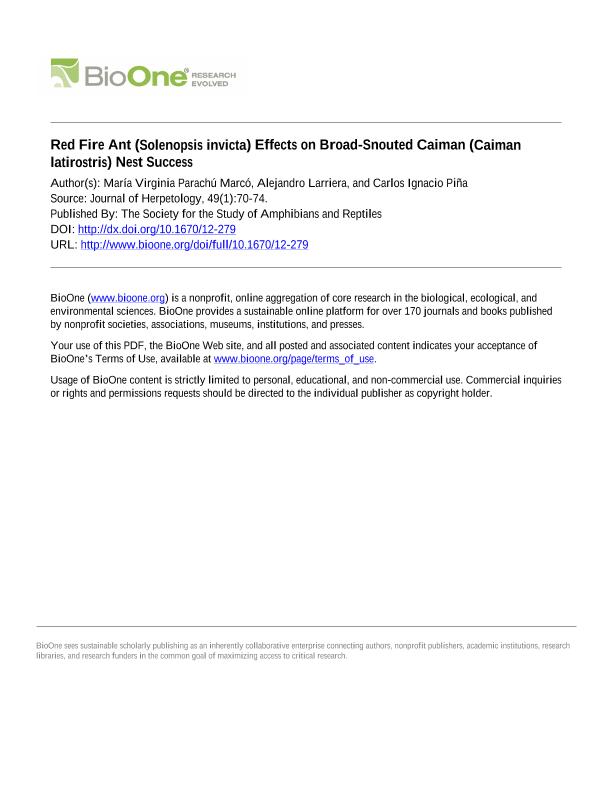Artículo
Red fire ant (solenopsis invicta) effects on Broad-Snouted Caiman (Caiman latirostris) nest success
Fecha de publicación:
03/2015
Editorial:
Society for the Study of Amphibians and Reptiles
Revista:
Journal of Herpetology
ISSN:
0022-1511
Idioma:
Inglés
Tipo de recurso:
Artículo publicado
Clasificación temática:
Resumen
Flooding and predation are the two major causes for the decline in hatching rate and hatchling survival in crocodilian species. Recently, Solenopsis invicta (Red Fire Ant) has been recognized as a formidable invasive species, causing changes in wild populations of reptiles. Because of the elevated densities of Red Fire Ants present in Caiman latirostris (Broad-Snouted Caiman) nests during the breeding season, experiments in captivity and in the wild were performed to verify if the presence of S. invicta affects nest success or care of eggs and the hatching-assistance behavior of C. latirostris females. Hatchling survival from eggs incubated in a lab setting in the presence of Red Fire Ants decreased by approximately 10% compared to nests without ants. In a second experiment performed in the wild, the presence of Red Fire Ant resulted in a 43% reduction in nest success including direct (14.5%) and indirect (28.5%) effects. Our study confirmed that Red Fire Ants negatively affect C. latirostris nest success, directly because Red Fire Ants attack and cause the hatchling's death after pipping and indirectly by preventing females from caring for eggs, providing hatching assistance, and maintaining nests.
Palabras clave:
Caiman
,
Reproducción
,
Hormiga Colorada
,
Nidificación
Archivos asociados
Licencia
Identificadores
Colecciones
Articulos(CICYTTP)
Articulos de CENTRO DE INV.CIENT.Y TRANSFERENCIA TEC A LA PROD
Articulos de CENTRO DE INV.CIENT.Y TRANSFERENCIA TEC A LA PROD
Citación
Parachu Marco, Maria Virginia; Larriera, Alejandro; Piña, Carlos Ignacio; Red fire ant (solenopsis invicta) effects on Broad-Snouted Caiman (Caiman latirostris) nest success; Society for the Study of Amphibians and Reptiles; Journal of Herpetology; 49; 1; 3-2015; 70-74
Compartir
Altmétricas




